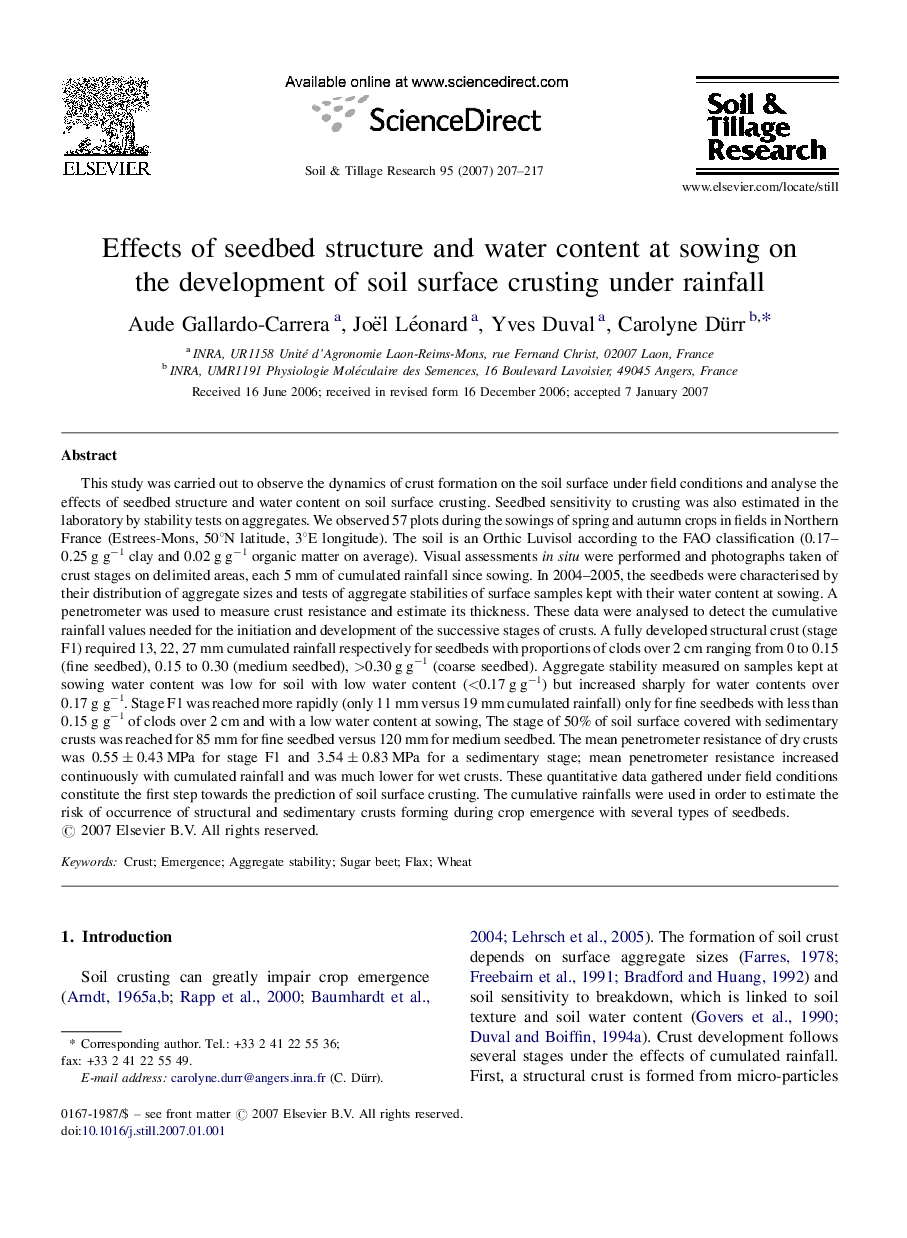| کد مقاله | کد نشریه | سال انتشار | مقاله انگلیسی | نسخه تمام متن |
|---|---|---|---|---|
| 306692 | 513109 | 2007 | 11 صفحه PDF | دانلود رایگان |

This study was carried out to observe the dynamics of crust formation on the soil surface under field conditions and analyse the effects of seedbed structure and water content on soil surface crusting. Seedbed sensitivity to crusting was also estimated in the laboratory by stability tests on aggregates. We observed 57 plots during the sowings of spring and autumn crops in fields in Northern France (Estrees-Mons, 50°N latitude, 3°E longitude). The soil is an Orthic Luvisol according to the FAO classification (0.17–0.25 g g−1 clay and 0.02 g g−1 organic matter on average). Visual assessments in situ were performed and photographs taken of crust stages on delimited areas, each 5 mm of cumulated rainfall since sowing. In 2004–2005, the seedbeds were characterised by their distribution of aggregate sizes and tests of aggregate stabilities of surface samples kept with their water content at sowing. A penetrometer was used to measure crust resistance and estimate its thickness. These data were analysed to detect the cumulative rainfall values needed for the initiation and development of the successive stages of crusts. A fully developed structural crust (stage F1) required 13, 22, 27 mm cumulated rainfall respectively for seedbeds with proportions of clods over 2 cm ranging from 0 to 0.15 (fine seedbed), 0.15 to 0.30 (medium seedbed), >0.30 g g−1 (coarse seedbed). Aggregate stability measured on samples kept at sowing water content was low for soil with low water content (<0.17 g g−1) but increased sharply for water contents over 0.17 g g−1. Stage F1 was reached more rapidly (only 11 mm versus 19 mm cumulated rainfall) only for fine seedbeds with less than 0.15 g g−1 of clods over 2 cm and with a low water content at sowing, The stage of 50% of soil surface covered with sedimentary crusts was reached for 85 mm for fine seedbed versus 120 mm for medium seedbed. The mean penetrometer resistance of dry crusts was 0.55 ± 0.43 MPa for stage F1 and 3.54 ± 0.83 MPa for a sedimentary stage; mean penetrometer resistance increased continuously with cumulated rainfall and was much lower for wet crusts. These quantitative data gathered under field conditions constitute the first step towards the prediction of soil surface crusting. The cumulative rainfalls were used in order to estimate the risk of occurrence of structural and sedimentary crusts forming during crop emergence with several types of seedbeds.
Journal: Soil and Tillage Research - Volume 95, Issues 1–2, September 2007, Pages 207–217